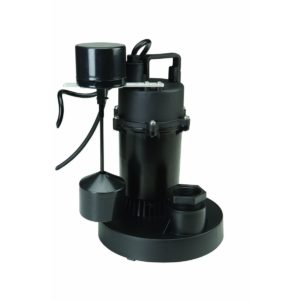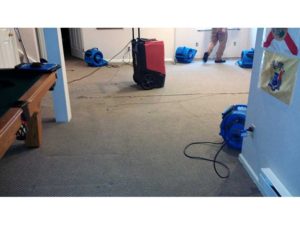 After heavy rains or snow melt, protecting your home from destructive water damage takes a properly functioning sump pump. In fact, our experts at Project X Restoration in Denver know exactly why sump pumps are important to keep your home safe from water damage. We’ve seen what happens when they don’t do their job, so give our tips a read and make sure your sump pump is ready for anything.
After heavy rains or snow melt, protecting your home from destructive water damage takes a properly functioning sump pump. In fact, our experts at Project X Restoration in Denver know exactly why sump pumps are important to keep your home safe from water damage. We’ve seen what happens when they don’t do their job, so give our tips a read and make sure your sump pump is ready for anything.
You may be wondering, what does a sump pump do? If there’s standing water around your home, your sump pump removes the excess water around the foundation and helps prevent water damage. As you can imagine, anything that protects your foundation needs to work, especially in an emergency. When it comes to your sump pump, regular maintenance and inspections will ensure you’re protected.
Here’s what you need to do to keep your sump pump in good working order:
Inspection
Inspect your sump pump every week or so to make sure it’s working correctly. Don’t wait until you have water around your house to see if the pump works. If you take care of it, it will do its job when the rain and snow come.
Testing
Because you want your sump pump to be ready when you need it, you need to test it to make sure it is working properly. Get into a habit of testing your sump pump twice a year, before spring and fall are a great rule of thumb. Here’s how:
- Locate the exit pipe that drains the water from the pump outside your home. Look at the pipe and make sure it isn’t clogged with dirt or gunk. Also, make sure it directs water away from your home’s foundation.
- Locate your sump pump, which is usually installed in the basement or crawlspace, near the walls of the foundation. Remove the lid and remove any debris to make sure the pump isn’t clogged.
- Trace the two electrical cords of the sump pump. The pump cord plugs into the back of the float cord plug. Unplug both cords, then plug only the pump cord back into the outlet. The pump should turn on immediately. If you hear a humming sound, the pump is running properly.
- Plug the two cords back as they were – the float cord first, then the pump cord into the back of float plug.
If your sump pump doesn’t have two cords then use the methods below.
- Slowly pour about 5 gallons of water into the pump pit until the float rises. Listen for the pump to kick on. Make the water gets pumped out and the pump turns itself off when it’s pumped all the water. Do this test twice to ensure the pump works.
- If you can’t pour water into the sump pump, then lift the float with your hand and check that the pump turns on. However, don’t let the pump run for more than a few seconds or it could damage the motor.
If these methods of testing your sump pump don’t work, be sure to have it serviced by a professional.
Clean and Maintain
If your sump pump has been used, mud, leaves, pebbles and other gunk can create a clog over time. This can cause the pump to shut off before it should. When you’re cleaning the filter, go ahead and clear the entire pump and pit. Start by unplugging the sump pump and disconnecting the drain line. Take them outside and use a garden hose to flush out all the debris and clogs, and flush the entire unit with water.
Don’t forget to clean the sump pit. Make sure you take off anything that might clog the drain line. When the pump is reconnected, pour some water into the pit and check to see if the sump pump works.
Replace the Batteries
Don’t forget that some sump pumps have a backup battery. Check your owner’s manual and periodically replace the batteries. Sometimes heavy rains and electrical failures occur at the same time. If this happens, your battery backup could save your basement from water damage.
Normally a sump pump will have to be replaced about every seven years. If you follow this procedure for routine maintenance it could prolong the life of your sump pump.
Sump pumps are important to keep your home safe from water damage. When the heavy rains or snow melt come, being prepared will give you peace of mind. Our experts at Project X Restoration in Denver know how traumatic the destruction from water damage can be. If you need help with cleanup or mold remediation caused by water damage, our restoration experts are here to help you.
